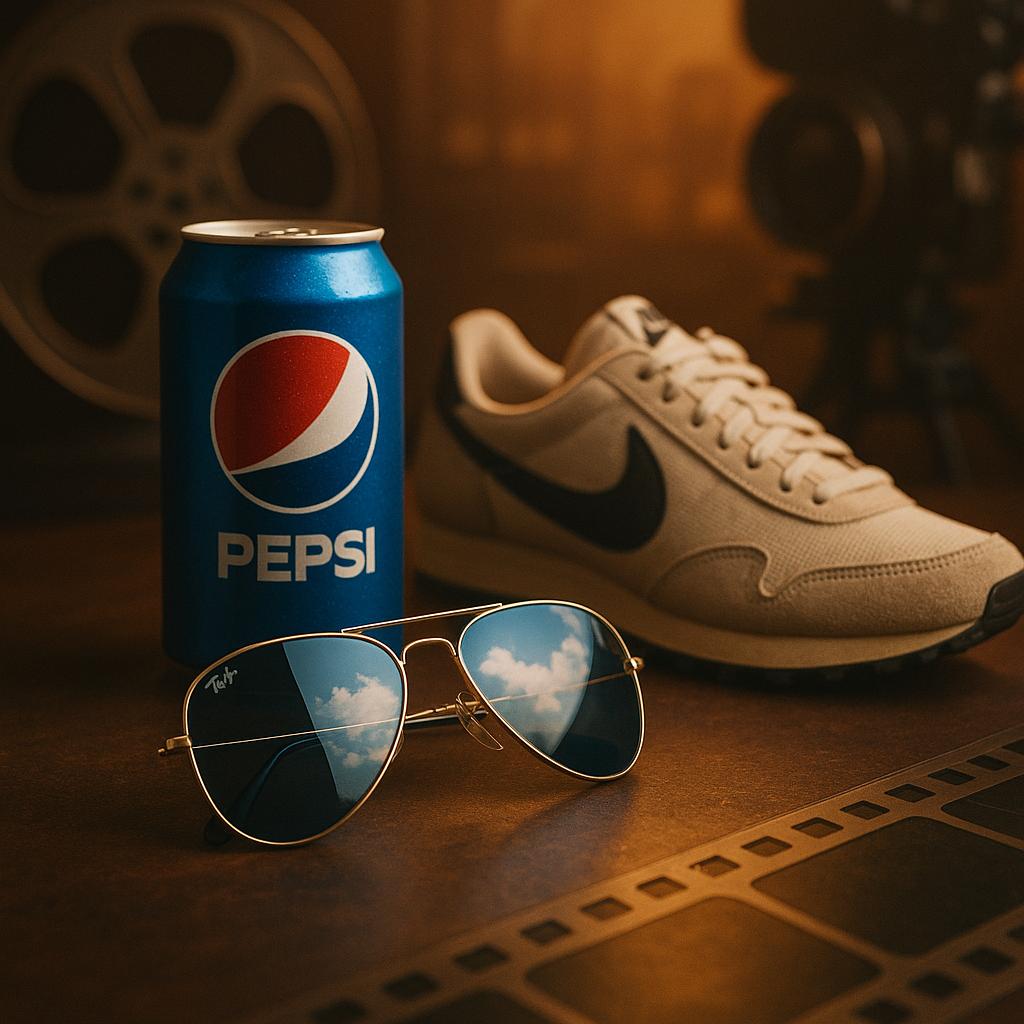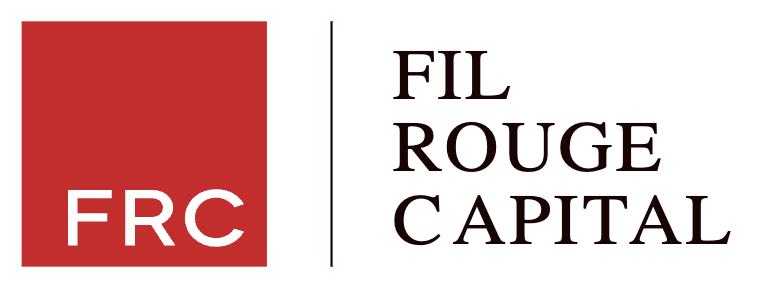A candy trail that leads an alien out of hiding. Sunglasses that define a decade of cool. A volleyball that becomes a castaway’s only friend.
Product placement in movies turns ordinary items into cultural symbols. When it fits the story, it becomes part of what people remember long after the credits roll.
Some placements sell products, others shape how we see entire brands.
Let’s look at some of the most iconic examples and how each brand made its moment count
Iconic Examples of Product Placement in Movies
The best-known cases share three traits:
- The product is visible.
- The use makes sense.
- The moment is memorable.
Our list below shows how each brand found its lane.
1. Reese’s Pieces in E.T. the Extra-Terrestrial (1982)
A lonely boy befriends an alien hiding near his home. Their secret bond drives a family-scale adventure that became a global classic. The film’s warmth made it safe for a candy brand to ride along.
The candy forms a trail that lures E.T. from hiding. It is a tactile, kid-friendly beat that audiences remember decades later.
Hershey saw a sharp rise in attention and sales in the weeks after release, widely cited as a textbook win for in-film advertising. Snopes tracks the backstory and the disputed uplift figures, noting Mars passed and Hershey said yes to the tie-in.
2. Ray-Ban Sunglasses in Top Gun (1986)
Elite naval aviators train and compete. Style and swagger do as much work as plot.
Tom Cruise’s aviators became visual shorthand for confidence.
The shades are part of the lead’s identity. They appear in sunlit flight lines and candid off-duty scenes. No ad copy. Just cool utility.
Contemporary coverage and later reporting point to major sales jumps. Ray-Ban gained a fashion anchor point, and the brand enjoyed renewed cultural relevance each time the film returned to conversation.
3. BMW and Aston Martin in James Bond Franchise
Bond and his cars share a single idea: power with polish.
BMW’s mid-90s entries and Aston Martin’s recurring presence turned vehicles into characters of their own. Car cameos matched the gadget-forward tone, and chase scenes provided natural prominence.
BMW’s Z3 arrives in GoldenEye during a three-picture deal, then the 750iL and Z8 follow.
Aston Martin reclaims the mantle with the DBS in Casino Royale, syncing the reboot’s tone with a British performance icon.
The partnership sharpened both brands’ positions around performance and elegance.
It was reported that the Z3’s launch tied to GoldenEye led to more than 9,000 pre-orders by the end of 1995, far above target.
4. FedEx and Wilson in Cast Away (2000)
A FedEx systems analyst survives a plane crash and fights to live on an uninhabited island. The story is intimate and sparse. Everyday items become lifelines.
FedEx provides the story’s frame. A Wilson volleyball becomes the castaway’s only companion. Both integrations are central to the plot, not just props.
FedEx did not pay for placement, per film sources and reporting, yet the company saw brand-awareness gains in several regions after release. The production relied on FedEx facilities, aircraft, uniforms, and guidance to keep things authentic.
5. Pepsi in Back to the Future Part II (1989)
Marty McFly travels to the future (specifically 2015) where technology, pop culture, and consumer brands are all reimagined. The film’s vision of tomorrow became a touchstone for retro-futurism and product speculation.
In a notable café scene, Marty walks into the Café 80’s and orders a “Pepsi Perfect.” The futuristic bottle and automated dispenser introduced a new version of an iconic product.
Pepsi Perfect was created solely for the movie, instantly becoming a collector’s item in pop culture lore.
Decades later, Pepsi capitalized on revived interest by releasing a limited run of Pepsi Perfect bottles to coincide with the date Marty arrives in 2015.
6. Nike in Forrest Gump (1994)
We all know the story: a man with a simple outlook influences major events in American history. The story focuses on luck, resilience, and cultural shifts.
At one point, Jenny, Forrest’s love interest, gives him a pair of Nike Cortez sneakers. The shoes appear in several important scenes, such as when Forrest begins his cross-country run and when he runs through crowds in front of national landmarks like the Lincoln Memorial.
Sales of Nike Cortez shoes increased after the film. The shoes became linked to determination, and the placement strengthened Nike’s classic status in American culture.
7. Apple Products in… Well, Everywhere
Laptops, phones, and earbuds appear across countless films. Apple often shows up where characters are creative, affluent, or tech-forward. This presence shapes category norms without classic ads.
Directors have noted constraints around who can hold certain devices. Rian Johnson once remarked that Apple devices generally do not end up in villains’ hands. Coverage of that claim spread widely and sparked new rounds of media literacy among fans.
Why Brands Use Movies as a Marketing Channel
A single scene can define a category or revive a product line. Integrations also stretch across years, as films stream and syndicate.
Brands view cinema as a high-trust environment. Characters that people admire act as implicit validators. The best deals link story, distribution, and retail timing into one plan.
Emotional Association
A placement borrows a film’s feelings. Courage, romance, humor, tension. When a product carries that emotion, it sticks. The effect is strongest when the prop is used in a meaningful moment by a character with clear traits.
Longevity
Movies have long tails. The film airs in theaters, then on demand, on flights, in dorm rooms, and at family movie nights. That recurring exposure turns a one-time placement into years of ambient marketing.
Catalog titles also spawn memes and callbacks. As references resurface, so does the brand. The long arc favors simple, legible products that read instantly on screen.
Credibility
People trust characters they love. When those characters use a product credibly, it frames the brand as competent or cool. The inverse is real too. If a villain or a buffoon uses the product, that signal sticks.
Cost and Reach
Feature films can be costly, yet they pack unmatched cultural reach. A well-placed item can ride a global release without buying media. Smart marketers plan retail tie-ins, PR, and social content to capture demand spikes.
What Makes Product Placement Work
A placement is not a logo; it is a decision about character, setting, and timing. The craft lives in three choices: role, relevance, and restraint.
- Role: background, usage, or plot device.
- Relevance: does this character logically own or use this product?
- Restraint: fewer, more meaningful shots beat many quick cuts.
Different integration types have different impact:
| Integration type | What it looks like | Typical impact |
|---|---|---|
| Cameo | Brand in the background | Low recall, low risk |
| Character use | Brand handled or worn | Higher recall, stronger association |
| Narrative driver | Brand central to plot | Highest recall, risk if forced |
Modern Take: Streaming and Subtle Integration
Streaming platforms changed the mechanics. Placement is now negotiated for theatrical, streaming, and international versions. Some partners produce alternate cuts or adjust graphics for regions. Digital insertions can swap signage or packaging in post, which helps localization and retail timing.
Measurement is better too. Teams track share of screen, verbal mentions, character-product fit, search queries, and shopping behavior after premiere weekends. They report brand lift alongside critical scores and audience ratings.
Compliance remains a must. The FTC Endorsement Guides clarify that pure placement is different from an on-screen recommendation, which may trigger disclosures.
Final Thoughts
Product placement in movies is persuasive when it honors character and story.
It works because people feel first and rationalize later. Brands that respect that order earn memorable moments that survive for years.
The winning recipe is simple. Fit the product to the world. Use it with purpose. Measure what people remember and say. The rest is noise.
Liked this article? Try Stryng for free. It’s the AI platform that helped write it. You can also contact the Stryng team if you need great content for your marketing.
Frequently Asked Questions
Q: What is the difference between product placement and brand integration?
A: Product placement is any on-screen appearance of a brand or product. Brand integration goes further. The product is used in-scene or tied to the plot, which generally drives higher recall.
Q: Does product placement need a disclosure in the U.S.?
A: Usually no, if it is pure placement. If a character endorses or recommends a product in a way the audience might not expect, that can require a disclosure under the FTC Endorsement Guides.
Q: How do marketers measure success without exact sales data?
A: They track recall, sentiment, search interest, social mentions, backlinks, and retailer sell-through near release. They also compare baseline-to-peak trends against comparable periods.
Q: What is a common mistake in in-film advertising?
A: Overexposure. Too many shots or awkward angles pull viewers out of the story. Another pitfall is choosing a product that does not match the character or time period.
Q: Can small companies participate or is it only for giants?
A: Smaller brands can partner on indie films, regional releases, or streaming series. Clear objectives and careful contract terms matter more than budget size.
Q: What are the ethics of influencing audiences this way?
A: Ethics hinge on honesty and context. When brands stay authentic to characters and avoid misleading claims, audiences accept placements as world-building, not manipulation.



